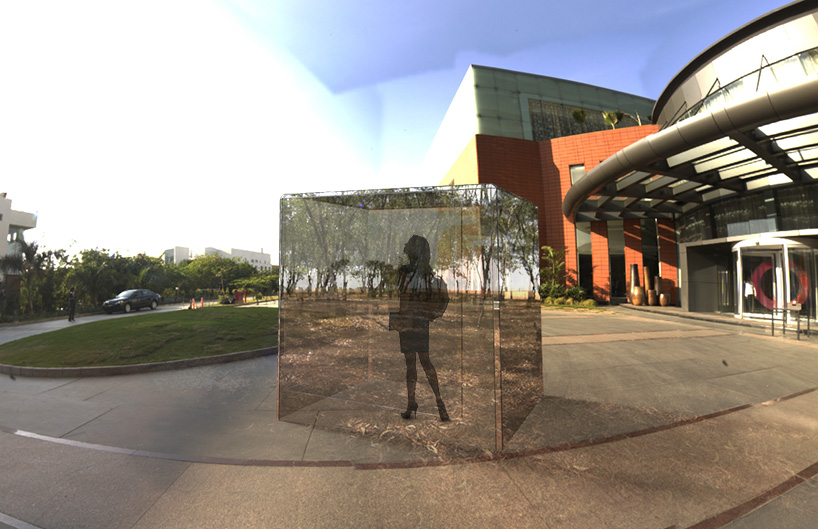
ANTICIPATION CUBE by Do, not try! from bulgaria
designer's own words:
People have forgotten their ancient instincts a long time ago - villages became big cities and doves were the only bird representatives around them. Formerly the mankind knew how to recognize animals’ behavior in different situations. "When the spider knits hard and the web is large, you will have a nice time; if the web is small and short - wait for a bad weather." Pliny the Elder, Roman scientist and philosopher (2000 years ago). Today, scientists have proven that spider perceives exactly the fluctuations of atmospheric pressure and increased water vapor concentration. When atmospheric pressure increases and will have a nice time, the spider weaving big net and catches more insects. Conversely, when the pressure drops (and there will be bad weather), they do not weave a large net because it can be easily destroyed. In the past people's life was much more threatened by adverse weather changes such as storms and prolonged rainfall, floods, droughts, earthquakes, volcanic eruptions, etc. So they had to learn the signs of nature, foreshadowing troubles. For instance, Japanese since ancient times apply to all signs predicting the storm, earthquake or tsunami. Therefore local bred small fish, in whose movement unmistakably recognize when a storm comes from the ocean. Today natural disasters still take the lives of thousands of people, despite the achievements of technology and communication tools. Today, it is already known that during the formation of each atmospheric process 1-2 days before the weather changes, modifications occur in the electromagnetic pulses, in the conductivity of air, in the voltage of the electric field. And at the time of the weather change sharply modifies the pressure, temperature, and humidity. In the long evolutionary process in many species were reinforced some perfect physiological mechanisms through which they anticipate upcoming changes and by their behavior they were able to protect themselves from the unpleasant consequences of bad weather. Here are only few of the interesting examples of the proven meteorologists among the Earth’s fauna: - “Swallows flying in the sky - the sun will shine. Fly low over the ground - it will surely rain (European/Asian Proverb)”. This behavior is due to the fact that their food - insects, in good weather fly high in the air and in bad weather they go down low to the ground or water surface to protect themselves from the strong air flows. In this case it was easier to observe birds’ behavior than the one of insects, which probably have the most developed sense for changes in the atmosphere.
- Many seabirds are wonderful meteorologists, too. Some of them are able to hear the “voice of the sea”. Seabirds perceive changes in the infrasound vibrations that precede storms and hurricanes. Indeed gulls, for which storm is dangerous, when feel the storm is close, they do not fly over the sea and swim in the water, but remain ashore and roam screaming on the beach and the rocks anticipating the storm. The opposite, when seagulls swim in the sea, it portends a good weather - their forecast is to be believed, as the most modern barometer.
- It was found that penguins can also predict the approaching cold at an early stage. In such cases, they group in a big circle, tightly clinging to their bodies, forming a so-called "turtle". In this formation can be grouped hundreds of birds and spend the whole winter.
There are countless evidences of animals anticipating earthquakes and volcanic eruptions as well. In the eve of such disasters their behavior becomes unusual and disturbing. An interesting fact, however, represents the existence of such a flower in Indonesia. Whenever it blooms, people from villages at the foot of volcanoes leave their homes because they knew that follows an eruption of the volcano. Here again the phenomenon is explained by the distributed ultrasonic waves into the earth and water, which rises up the capillaries of the flower. It is amazing how animals manage to predict these changes in the atmosphere and Earth's surface long before people can perceive any signs of danger. That’s why the foundation of our concept for anticipation are the following states: Patience, Observation, and Awareness. We consider these to be an essential part of the art of Anticipation – a skill, which could not only be an interesting experience to some people, but a life-savior as well. Our installation-incubator is actually a man-sized cubic room, made of glass display screens. The cube forwards animals’ weather forecast instincts to people in the form of visionary, displayed on the glass screen. Realistic sound effects complete the picture in human’s mind and perception. The user is invited to experience the three states of Anticipation. At first, they enter the cube and fall into a natural environment, in the middle of a sunny day. No buildings, no cars, no people. Only trees, an open sky, a lake, snow, birds, bees… The user is observing, and waiting … Little by little the speed of images is increasing and nature’s behavior changes faster and faster, like in a time-lapse footage. The user can feel these changes more and more intense and is getting impatient to see what is coming next. They become aware of what is happening, of what the behavior changes could mean. And after the worst has gone away, they are aware of their new abilities to see the changes of the surrounding environment, to feel more secured, and to draw their own conclusions about the development of human senses. In this hectic city life, people are moving away from their nature and through this Anticipation cube we want to recall this forgotten art of their ancestors.
The user is invited to experience the three states of Anticipation. At first, they enter the cube and fall into a natural environment, in the middle of a sunny day. No buildings, no cars, no people.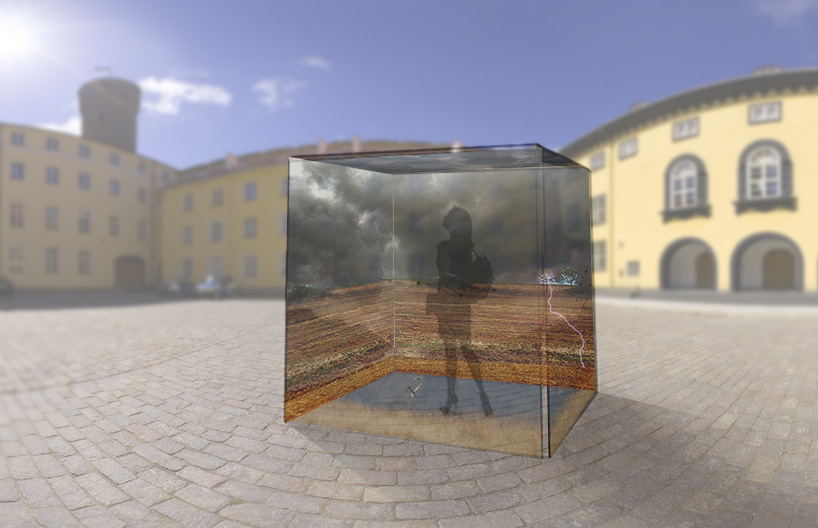
Birds fly low over the ground – it will surely rain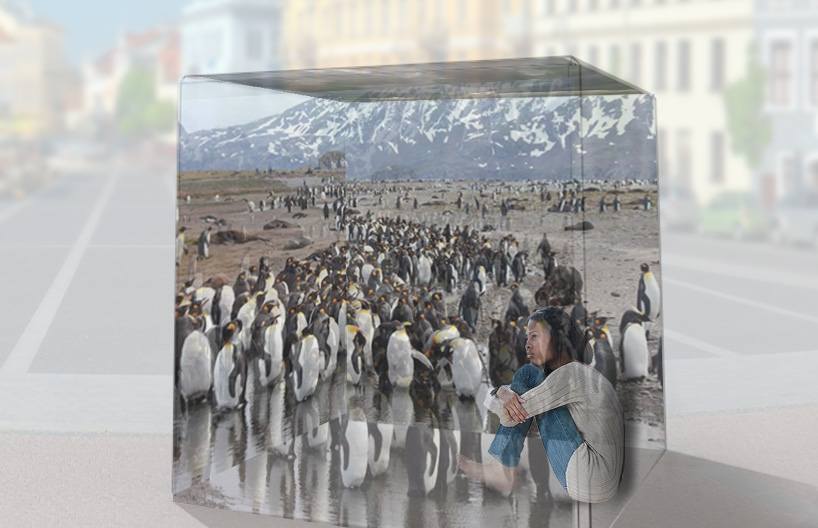
It was found that penguins can also predict the approaching cold at an early stage. In such cases, they group in a big circle, tightly clinging to their bodies, forming a so-called “turtle”. In this formation can be grouped hundreds of birds and spend the whole winter.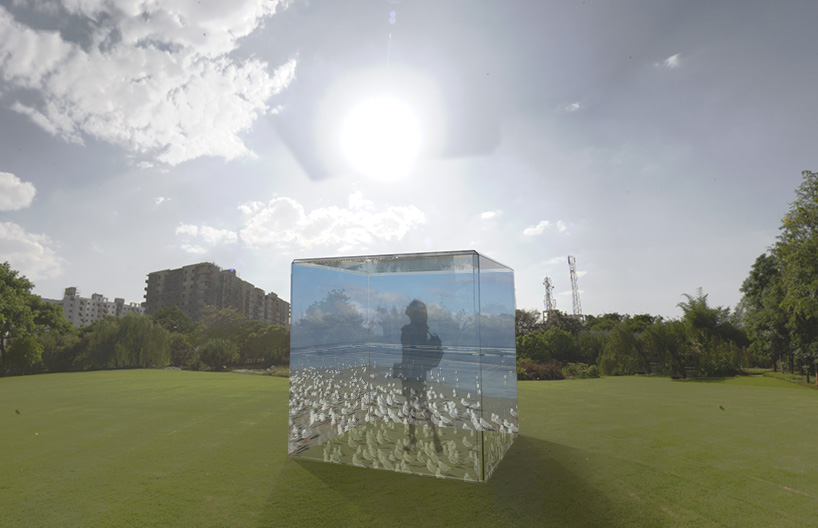
Many seabirds are wonderful meteorologists, too. Some of them are able to hear the “voice of the sea”. Seabirds perceive changes in the infrasound vibrations that precede storms and hurricanes. Indeed gulls, for which storm is dangerous, when feel the storm is close, they do not fly over the sea and swim in the water, but remain ashore and roam screaming on the beach and the rocks anticipating the storm.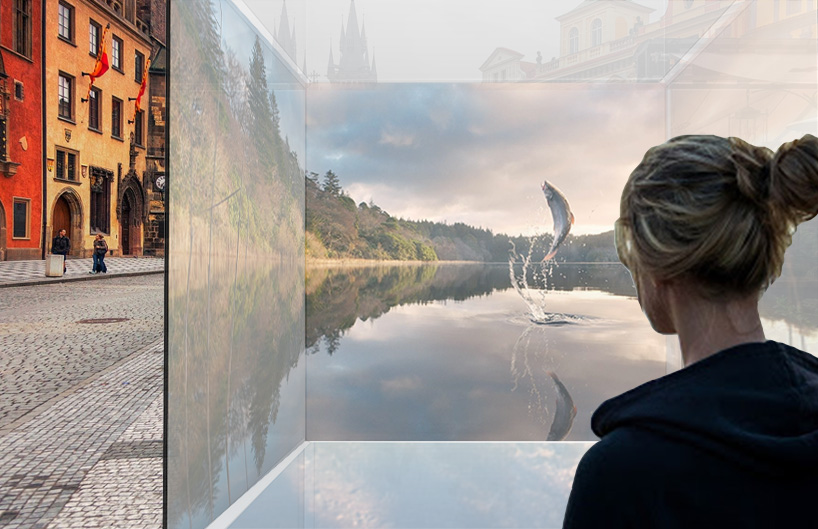
Fish jumps above the water, anticipating the approaching rain